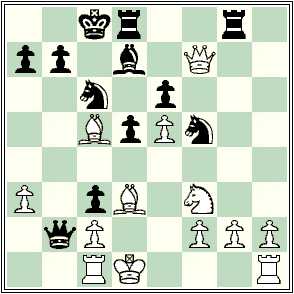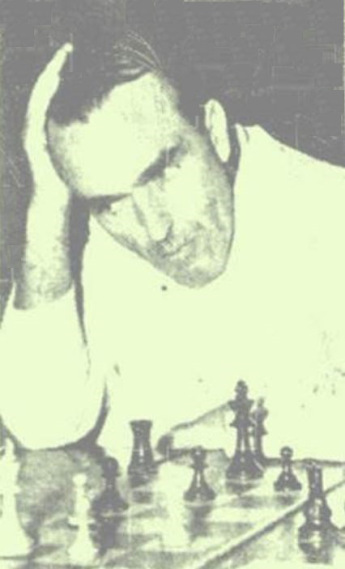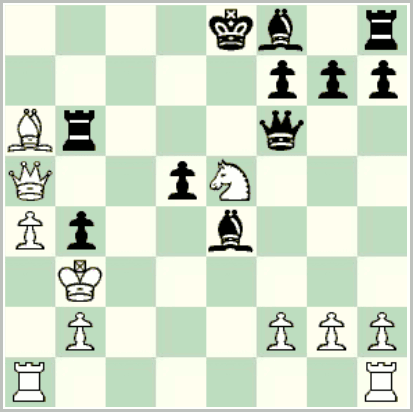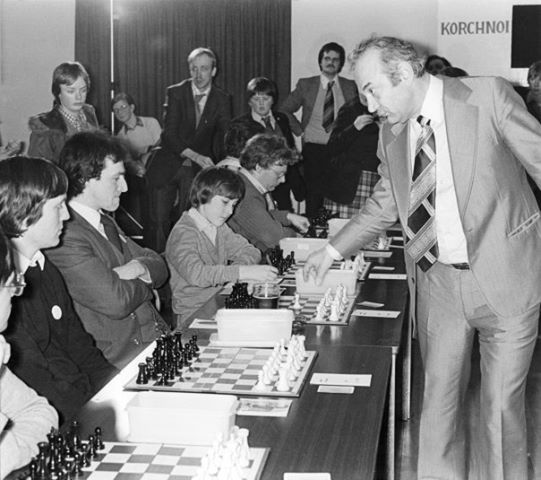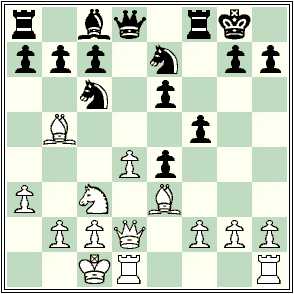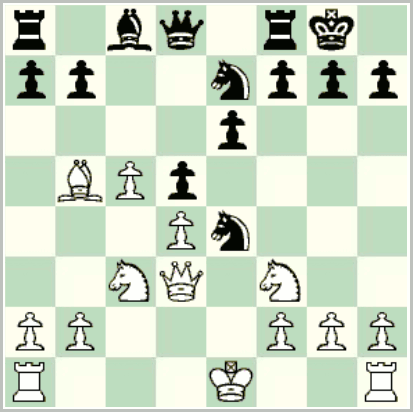On the 28th November Edward Winter’s Chess Notes ran a story about a chessplayer called Aaron Sayers who had fallen on hard times and run into a bit of trouble with the law. Mr Winter quoted from the April 1928 edition of the Chess Amateur that at Bow Street Police Court Sayers was “alleged to be known in Ireland as a champion chessplayer.”
Sometimes references outside the world of chess to someone being a “champion chessplayer” grossly exaggerate the person’s prowess at chess. However, the name Sayers seemed familiar to me and I was able to supply Chess Notes information from contemporary Irish newspaper reports which at least established there was an A. Sayers who had played at a very decent level in Ireland in the period 1914-1927. For the details see item 8417 of Chess Notes.
Among his achievements, this A. Sayers was a member of the victorious Sackville Armstrong Cup team of 1926. All this provides a pretext to present here at IRLchess the dramatic conclusion of the 1926 Armstrong Cup and a few other things besides.
Sackville Chess Club had been established at the beginning of the 20th century and quickly rose to the top of Dublin club chess, winning the Armstrong title for three successive years from 1904. Dublin Chess Club, established in 1867 and despite being the pre-eminent chess club in Dublin (or perhaps because it was), did not enter the Armstrong Cup when it started in 1888. Its first appearance in the Cup did not come until the 1906-1907 season and when that debut ended with a tie between Sackville and Dublin, an acrimonious row broke out over the tie-breaking rules.The ruling went in favour of Sackville and Dublin refused to enter the Armstrong the following season and the one after that. Fortunately time healed the wounds and Dublin returned to the competition in the 1909-1910 season. [I hope to come back to this controversy on another occasion.]
For over 30 years, only Dublin and Sackville won the Armstrong Cup until their domination was finally ended in 1936. Such was the intensity of their rivalry that on four occasions in the years 1925 to 1931 it took a tie-match between these two clubs to determine the winner. In the 1925 Armstrong both had won all eight of the their matches against the other clubs and scored a win apiece in their own encounters. The tie-match was won by Dublin who thus recorded their fourth successive Armstrong overall victory since its resumption in the 1921-1922 season.
Sackville gave themselves a good chance of ending that run by beating Dublin at home by five points to three in the 1925-1926 season renewal. With both teams then proceeding to beat all the other four teams twice, the destination of the Cup depended on the outcome of their return match at the Dublin CC clubrooms on the 15th April 1926.
The Irish Times reported on the match the following day:
“Some notion of the strength put forward on the occasion may be gleaned from the fact the the seventh player on the Dublin team was so accomplished an exponent of first-class chess as Mr. Moffat Wilson; and no fewer than four winners of the Leinster Championship appeared on the same side.”
Those four Leinster champions on the Dublin team were Messrs. Wallace, Cranston, Doyle and Gerrard. To this could have been added that Cranston had also won the Irish Championship in 1922. From our standpoint in the present day we can inform you that he would do so again in 1931 and that Dublin board 4 James Creevey took consecutive Irish titles in 1933 and 1934. Our earlier post P.J. Laracy, Philip Baker and the 1927 Leinster Championship discusses board 5 Laracy’s later Leinster titles.
However the Sackville team were no slouches either, their top board Philip Baker had won the Irish championship in 1924 (wresting the title from Cranston in a challenge match) and went on to win it on three other occasions. Charles Barry at that time had three Leinster Championship wins and notched up a further four, while P.W. Whelan went on to win the Leinster individual title twice in the late 1940s.
Taking up again the Irish Times report:
“The first victory recorded was Mr. Moffat Wilson’s but Sackville retrieved the reverse soon afterwards by Mr. Bowesman’s defeat of Mr. Gerrard. In the last half-hour Dublin made three successive scores [wins from Wallace, Creevey and Watkinson]. Meanwhile Mr. Sayers was pressing Mr. Laracy hard, and at 11 o’clock his victory seemed assured. In the remaining two games any result might occur.”
So Dublin ended the evening leading 4-1 and only needing another half-point to force a tie with Sackville in the overall competition. On the 20th April the Irish Times reported on the outcome of the adjourned games. Sayers and Kane both won to bring Sackville to only 4-3 behind.
“The final issue lay between Mr. Cranston (Dublin) and Mr. C.J. Barry (Sackville). For two hours the contest in a very even game continued, and neither of the very sound and deliberate players gave his opponent the slightest chance to turn the scale. Mr. Barry exhausted every possibility before he would consent to a draw. This result could not be avoided.”
Dublin 4.5-3.5 Sackville
N.H. Wallace 1-0 P. Baker
T.G. Cranston Draw C.J. Barry
J.J. Doyle 0-1 T.P. Kane
J. Creevey 1-0 P.W. Whelan
J.J. Laracy 0-1 A. Sayers
J.T. Gerrard 0-1 H.N. Bowesman
W. Moffat Wilson 1-0 J. Taylor
A.P. Watkinson 1-0 N. McCluskey
So a tie-match, to be played within a fortnight, would be needed to determine the destination of the Cup. The rules slightly favoured Sackville. Should the tie-match be drawn, a further match would be played at the beginning of the next season. If that also ended drawn, then the game points scored throughout the competition would result in final victory going to Sackville by 66 to 61.
The previous season the tie-match had been on neutral ground, hosted by Dublin University CC at Trinity College, but this time it was arranged to be played at 20 Lincoln Place, the home of the Dublin Chess Club. However, at the request of both clubs, Major Cotter of the National Army GHQ club (which had finished in 5th position) was to have charge of the arrangements as he had done in 1925. To ensure the greatest level of neutrality his club was to supply the boards and chess pieces to be used.
On the 30th April the two teams lined out at the Dublin CC clubrooms. Dublin retained seven of the team that had won in their recent encounter, the absence of Gerrard slightly weakening their team for the play-off, and the holders also tweaked their board order. Sackville replaced their bottom two boards, who had both lost in the regular season decider, with G.M. Hickey coming in at 4 and Whelan dropping below Sayers to board 6.
Sackville struck first with wins from Whelan and Jacobs on boards 6 and 8 but Doyle pulled one back for Dublin and about an hour later Watkinson brought the scores level a 2-2. Next Bowesman and Laracy drew before Sackville’s long-time captain Kane won against Creevey to put his team ahead by a point. Only the top two boards were left and Baker reversed the result from his game two weeks earlier against Norman Wallace to take Sackville over the finishing line. The board 2 game was adjourned and finished on the 4th May with Cranston’s win over Barry, as the Irish Times put it, “reduc[ing] the winner’s score to the smallest margin consistent with success.”
Dublin 3.5-4.5 Sackville
N.H. Wallace 0-1 P. Baker
T.G. Cranston 1-0 C.J. Barry
J. Creevey 0-1 T.P. Kane
J.J. Doyle 1-0 G.M. Hickey
A.P. Watkinson 1-0 A. Sayers
W. Moffat Wilson 0-1 P.W. Whelan
P.J. Laracy Draw H.N. Bowesman
H. McIlwaine 0-1 G.H. Jacobs
On the 10th June, the Irish Times reported on the ceremonial conclusion to the 1926 Armstrong Cup:
“The formal transfer of the Armstrong Cup, in such years as it happens to change hands, is taken to mark the close of the season for chess competitions in Dublin. It is a red-letter day for chess-players and accordingly the function which took place last week in the rooms of the Dublin Chess Club brought together an exceptional assemblage. It is four years since such a ceremony took place before, when Sackville surrendered custody of the Cup to Dublin.
Players from virtually all the competing clubs were present, but the most numerous body of visitors came from the Sackville Chess Club, which once more enters into possession of what was twenty years ago its unchallenged inheritance. Mr. Frank Hobson took the chair, in the absence of the Dublin President, Mr. Moffat Wilson. He congratulated the Sackville team on their victory and on the spirit they displayed throughout the contest.
After a brief review of the history of the Armstrong Cup, he handed the trophy to Mr. Bowesman, the Sackville President.”
Turning from the history of one competition, thoughts focused on the creation of a new one.
“Mr. Bowesman made a graceful speech in reply, in which he took occasion to enforce a hint of Mr. Hobson’s to the desirability of a Junior Cup for the less formidable clubs.
Speaking as a player of one of the minor clubs, Blackrock, Mr. R.T. Varian supported the proposal. Major Cotter spoke later on behalf of the youngest of the competing clubs, G.H.Q.”
The newspaper report concluded by alluding to the competition’s earliest days:
“A vote of thanks to Mr. Hobson, who is a surviving member of the original Phoenix team, which was the first to win the Armstrong Cup thirty-eight years ago, was then passed with enthusiasm.”
Taking a time machine forward to the 1926-1927 season, I can tell you that the suggested Junior Cup took physical form in the Ennis Shield. The bottom two teams from the 1926 Armstrong Cup, UCD and GHQ, were placed in the new league and were joined there by a team representing the non-commissioned officers at Army headquarters, Dublin Corporation, the Jewish Union and Rathmines. University College Dublin won the first Ennis Shield and replaced their fellow University team, Dublin University, in the Armstrong Cup in the first ever promotion and relegation in Leinster league competition.
Despite the modesty of Ralph Varian, Blackrock remained in the top division and in 1936 it was his club that finally ended the Dublin-Sackville Armstrong Cup hegemony.
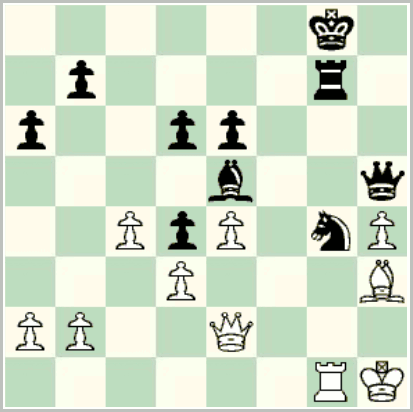 The new champion is Diana Mirza after a surprisingly competitive event. The second round featured a surprise that could have been a shock, when the winner dropped half a point against Clare McCarrick of Longford Juniors. In the diagrammed position, McCarrick, as Black, had a clear win with 37. … Nf6, when she emerges a piece up. Instead she played the natural-looking 37. … Qxh4? and was caught by surprise by the resourceful 38. Qxg4!=. McCarrick was not listed in the ICU rating list before the event, but the one after shows her conceding over 750 rating points (1650 vs. 897); it must have been an interesting atmosphere during the game!
The new champion is Diana Mirza after a surprisingly competitive event. The second round featured a surprise that could have been a shock, when the winner dropped half a point against Clare McCarrick of Longford Juniors. In the diagrammed position, McCarrick, as Black, had a clear win with 37. … Nf6, when she emerges a piece up. Instead she played the natural-looking 37. … Qxh4? and was caught by surprise by the resourceful 38. Qxg4!=. McCarrick was not listed in the ICU rating list before the event, but the one after shows her conceding over 750 rating points (1650 vs. 897); it must have been an interesting atmosphere during the game!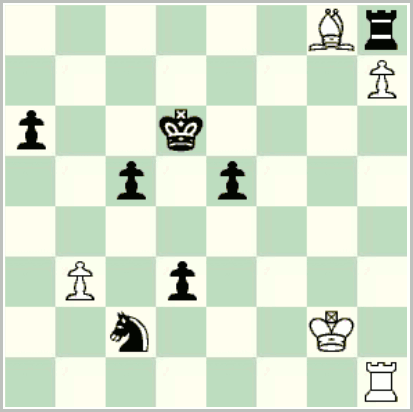 The championship came down to the final round game between Gearóidín Uí Laighléis and Mirza, with Mirza half a point behind and needing to win with the black pieces. She won a pawn and seemed to be heading to a smooth win, but unaccountably allowed her opponent to develop a dangerous passed pawn. In the diagrammed position White, to play, had 65. Kf3, when the d-pawn will drop, with surely at least a draw. Instead after 65. Kf2? e4 the passed pawns became too dangerous.
The championship came down to the final round game between Gearóidín Uí Laighléis and Mirza, with Mirza half a point behind and needing to win with the black pieces. She won a pawn and seemed to be heading to a smooth win, but unaccountably allowed her opponent to develop a dangerous passed pawn. In the diagrammed position White, to play, had 65. Kf3, when the d-pawn will drop, with surely at least a draw. Instead after 65. Kf2? e4 the passed pawns became too dangerous.
